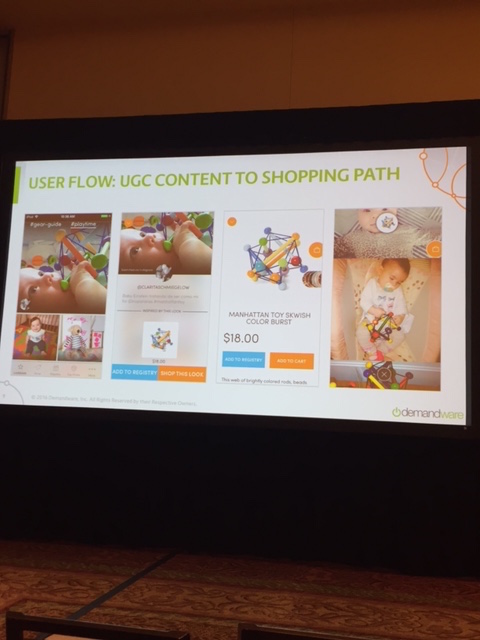
Get your FREE 30-day trial.
Please complete all fields.
One of the busiest breakout sessions at the recent Demandware XChange conference featured 1-800 CONTACTS, Cole Haan and Giggle, which presented their business cases for building a dedicated app for mobile commerce.
Despite challenges, dedicated mobile retail apps are growing. According to one report, the number of iOS-based shopping app downloads during 2015 Black Friday week was up 17% year-over-year, compared to just 2% growth in 2014.
“Overall, major retailers have continued to invest in mobile app technologies, despite consumers’ reluctance to adopt them,” wrote CNBC.com in December. “That’s because the payoff for converting a shopper can be substantial.”
Indeed, consumers who shop via an app tend to be the brand’s most loyal customers.
And that, in a nutshell, is the business case. The caveat, however, is that retailers have to work harder to attract and retain customers to a mobile app.
While 1-800 CONTACTS, Cole Haan and Giggle had slightly different reasons for building a mobile app, they were in agreement that, in order for a mobile app to be successful, it must include content and features exclusive to the app. In other words, it’s not nearly enough for the app to be transactional; consumers must be provided with distinct incentives to download and consistently use the app.
1-800 CONTACTS, for example, has a feature that lets consumers track wear, and set a reminder to order new contact lenses in compliance with their prescriptions. Consumers can opt-in for push or in-app notifications. Additionally, shoppers can use their phone’s camera to scan a barcode on the lens box or snap a picture of their prescription.
These features positively impact user behavior, and have resulted in conversion rate that is more than twice that of its mobile site.
“You have to have a very clear objective of what you want your app to do,” says Justin Olson, vice president of digital.
In their A/B testing of the new site vs. the old site the company saw a 9% increase in conversion for new mobile customers.
Cole Haan, like many retailers, had seen a significant uptick in mobile traffic to its site, but conversion rate was lagging. It set out to monetize mobile by working with PredictSpring to launch a mobile app using Apple Pay, and plans to enable third-party buy buttons on several social networks, flowing through Demandware Commerce.
“It is another platform to manage,” says Josh Krepon, vice president of global digital commerce at Cole Haan. “But we weren’t seeing mobile conversion go anywhere and we knew there had to be a better idea out there. This is getting us to the next phase of where mobile is going, so for us it was a no-brainer.”
In January, Cole Haan was named a top brand in mobile by L2, which noted that, “while 84% of fashion brands employ m-commerce, virtually zero have moved to simplify mobile checkout. With the Cole Haan Shopping app, consumers can complete transactions in just two clicks. Fingerprint recognition secures login and confirms checkout, and users can even “Shop the Look” from Cole Haan’s Instagram feed.” The latter feature, by the way, is available only on its app.
For its part, Giggle, a baby gear and apparel company, knew that its most loyal and lucrative customers are those creating registries. It launched a mobile app in September 2015, with thousands of user-generated photos of adorable babies wearing its clothes and playing with its toys; each photo leading consumers down a path to purchase or add to registry. (See the screen shot below)

“You have to ask yourself what your most loyal customers are looking for,” says Shawna Hausman, vice president of ecommerce and digital marketing.
The company saw an immediate increase in engagement on the site and overall lift in average order value. Its massive gallery of user photos has nearly 25% product coverage on their website. Customers that interact with this content more than 11% converted into sales with an increase in AOV of 26% as compared to those that interact with traditional brand content.
And in an effort to bring mobile technology into the store, the Giggle app has a barcode scanner, enabling registry-builders to use their phones (instead of store-supplied scanners) to add items to their wish list.
To be sure, mobile apps do not make practical sense for all retailers, given the additional resources and maintenance required. However, given the growth – the Q4 Demandware Shopping Index found that phones accounted for all of the year-over-year gains in both traffic and baskets created – the investment in mobile apps will likely make sense for a greater number of retailers.
That sentiment was echoed by Cole Haan’s Krepon, who advised retailers to “have a vision that looks a few years out, because by the time you get finished with the thing in front of you, the market will have moved on to the next thing.”